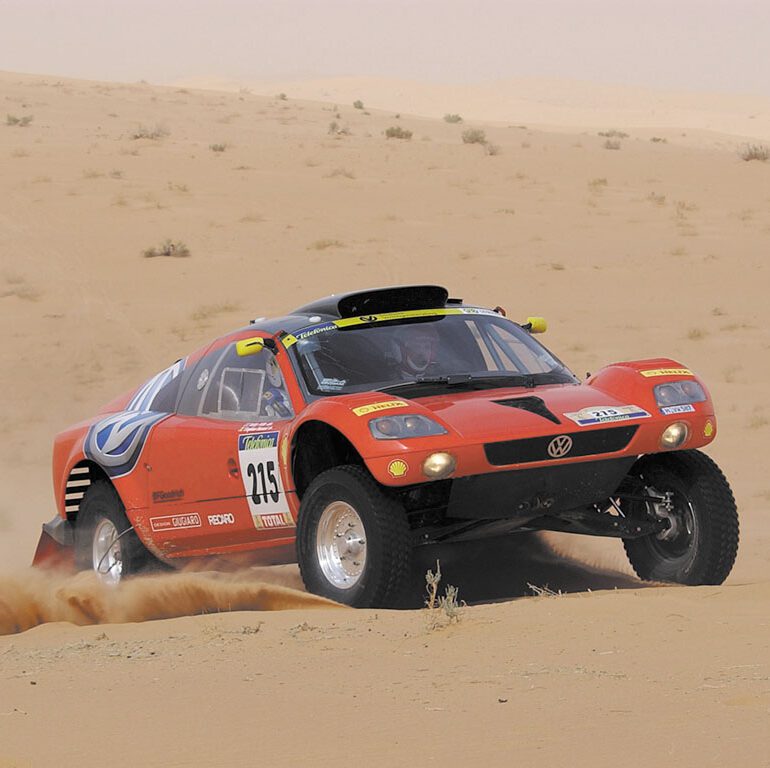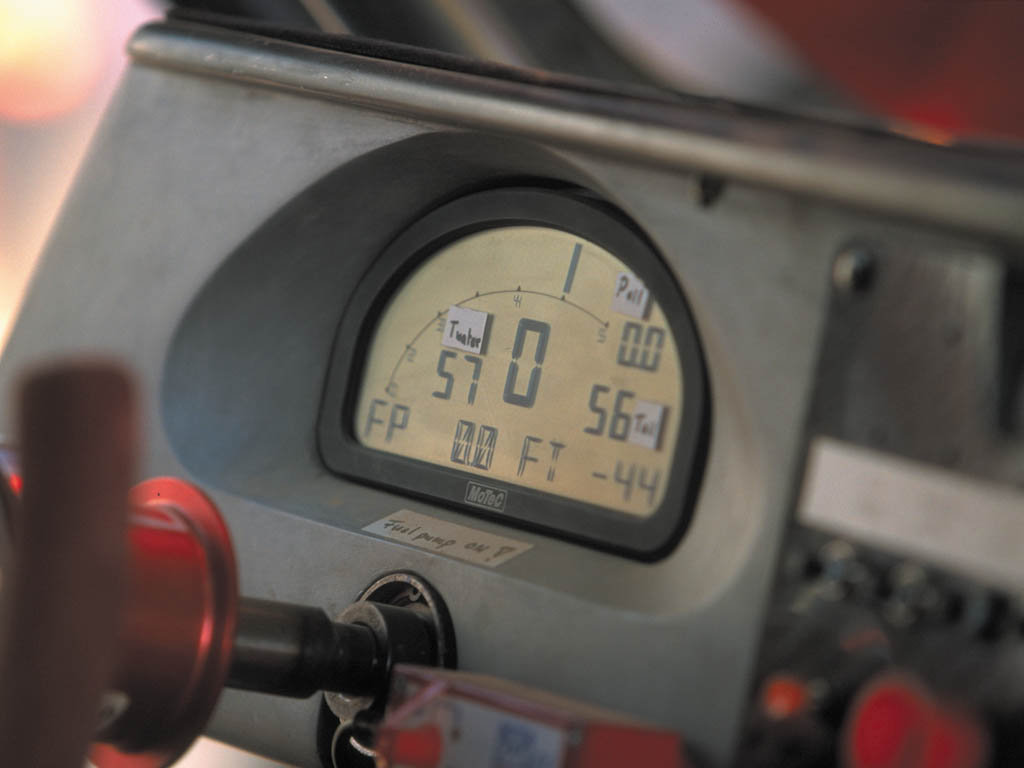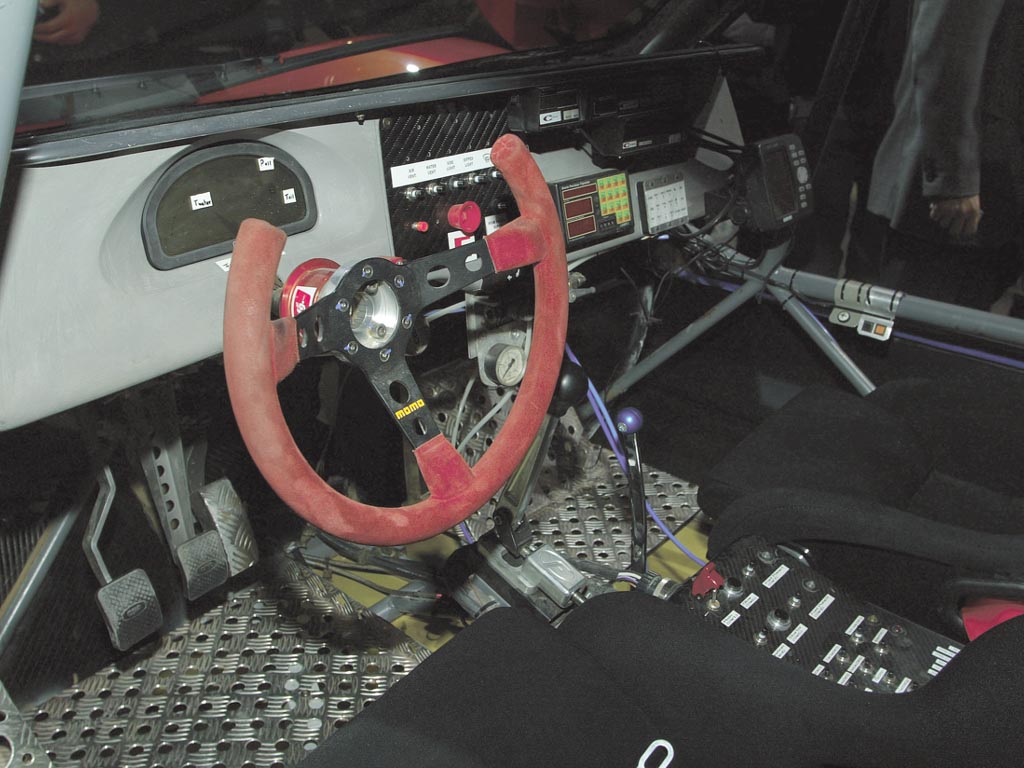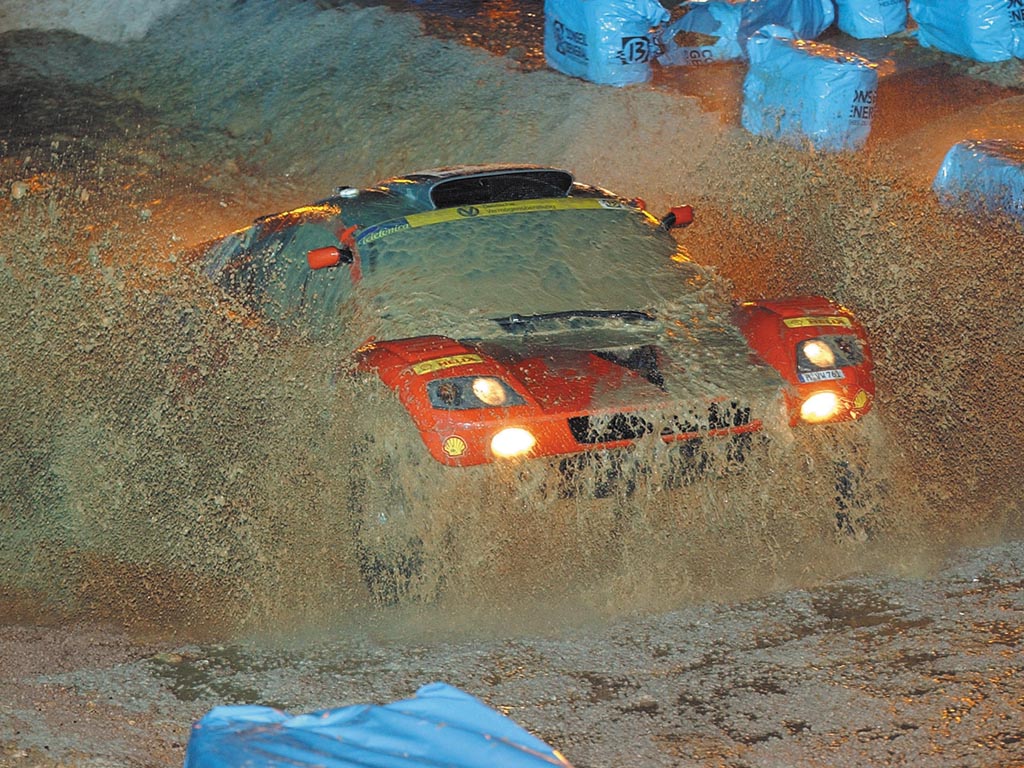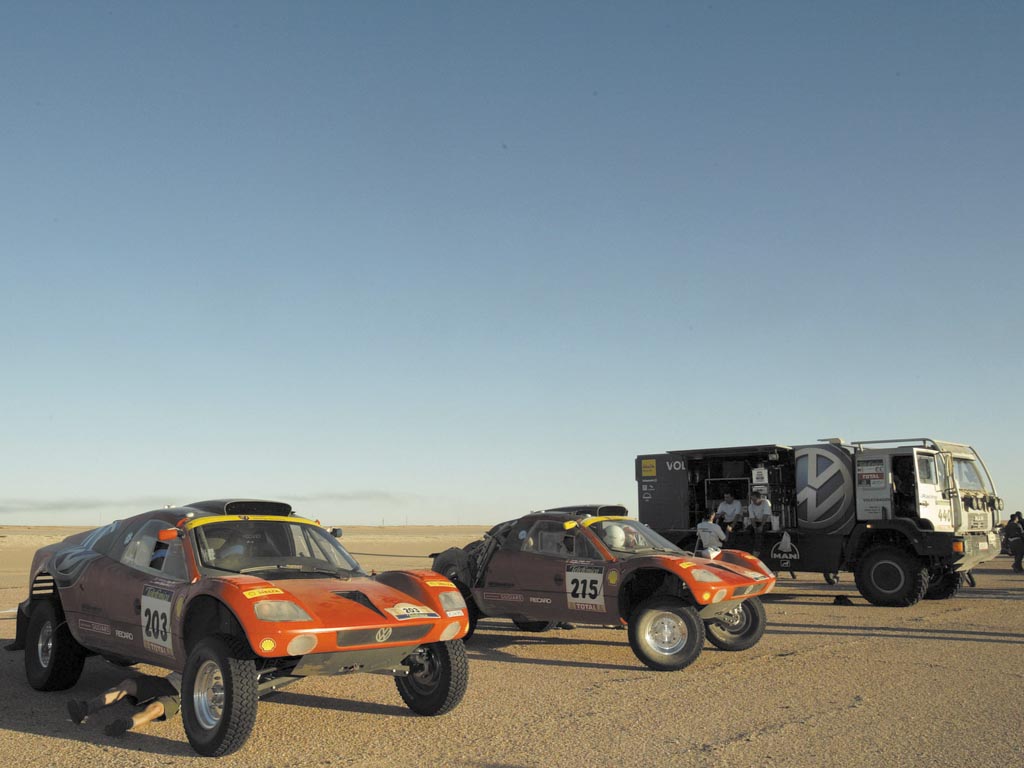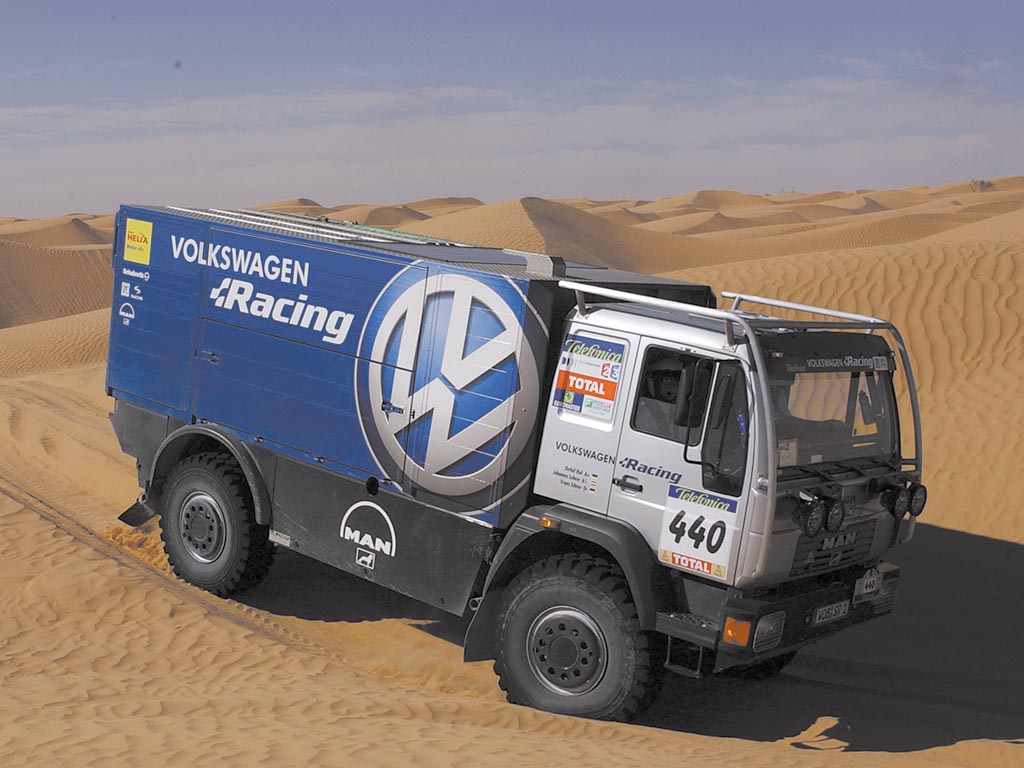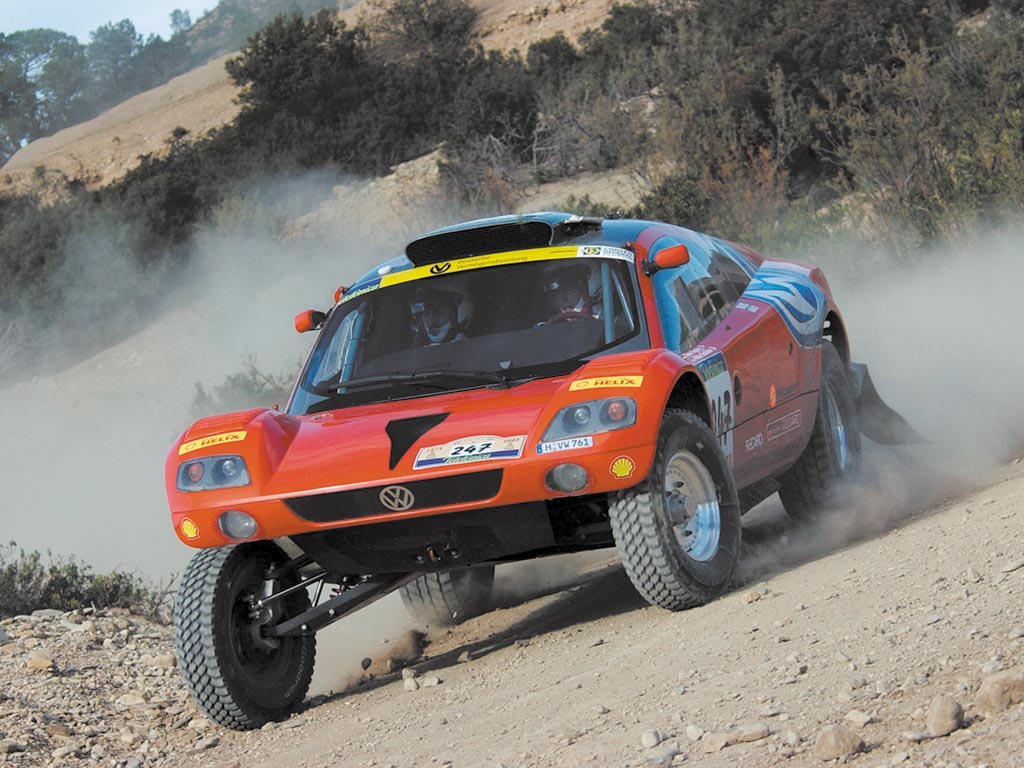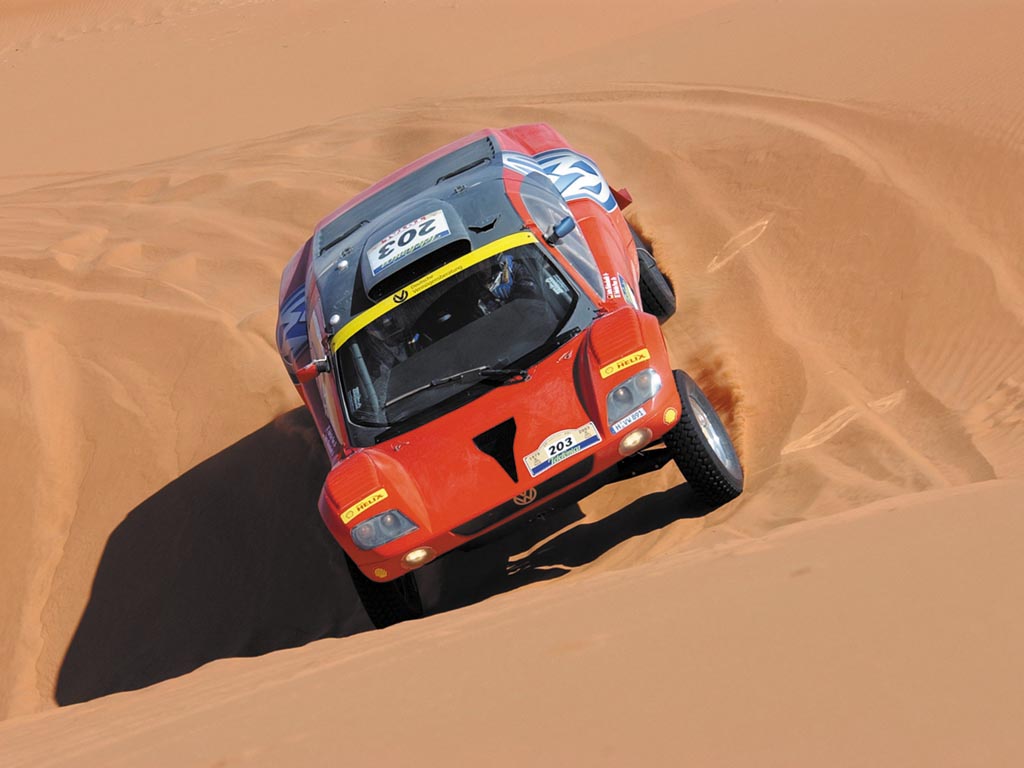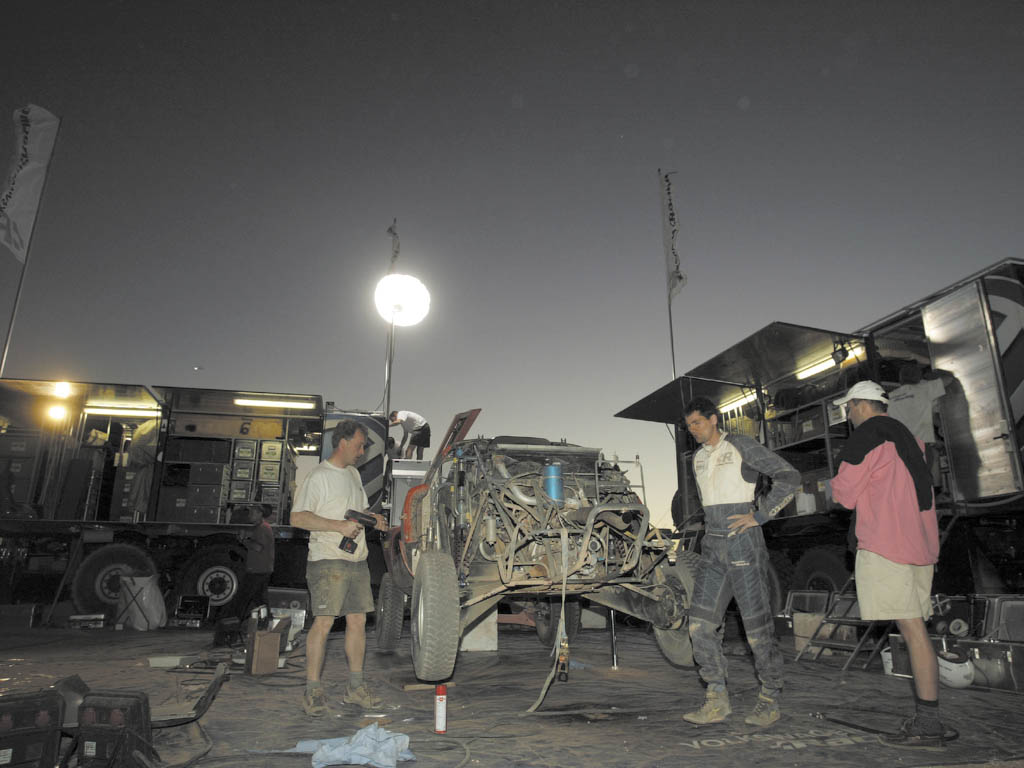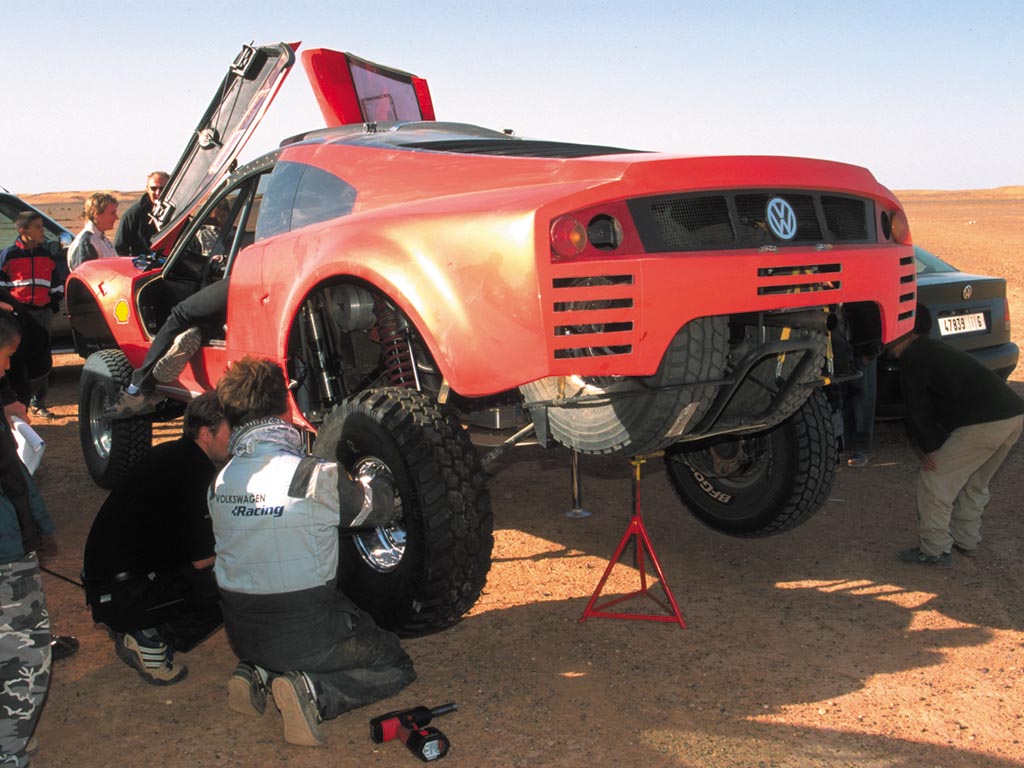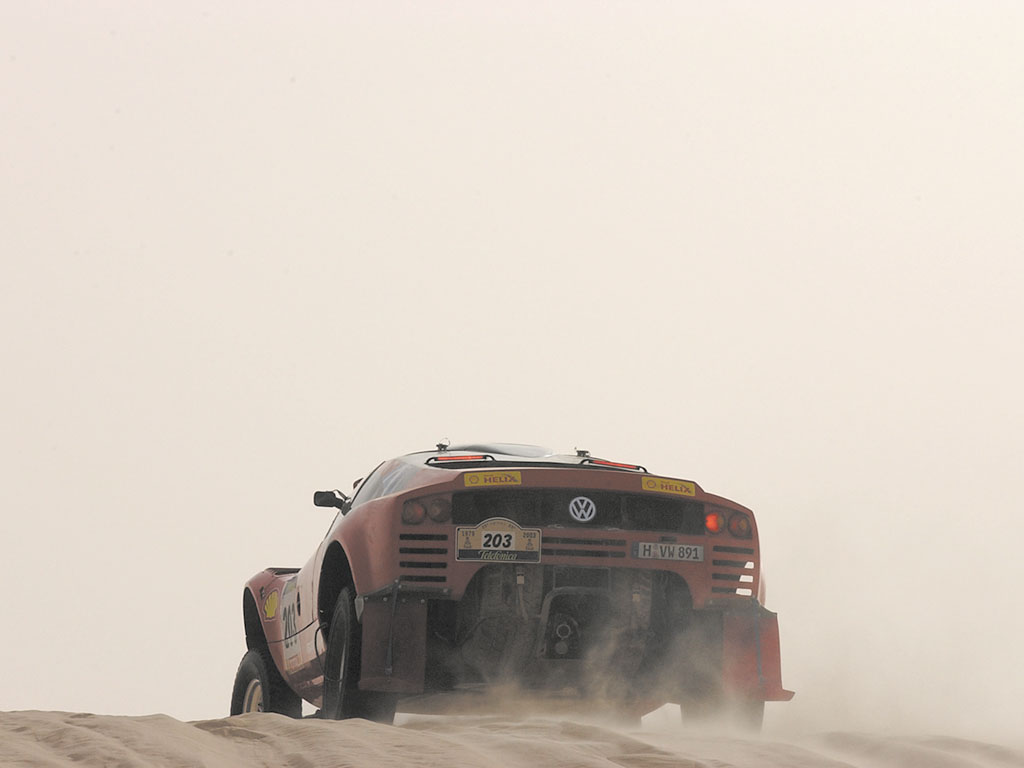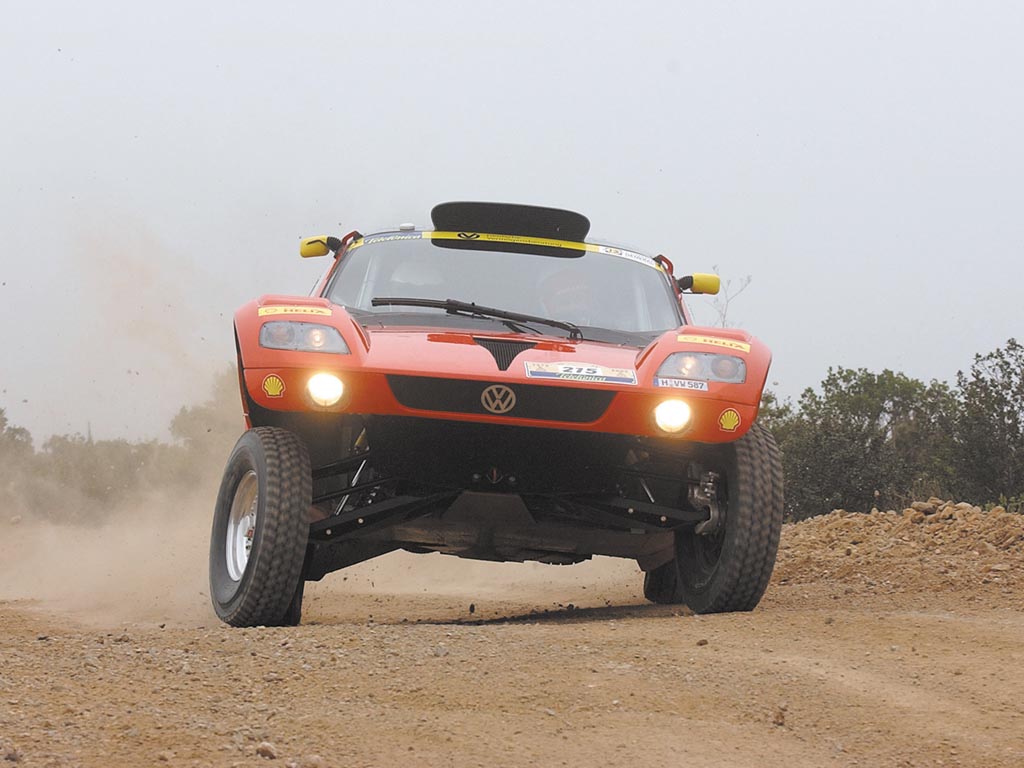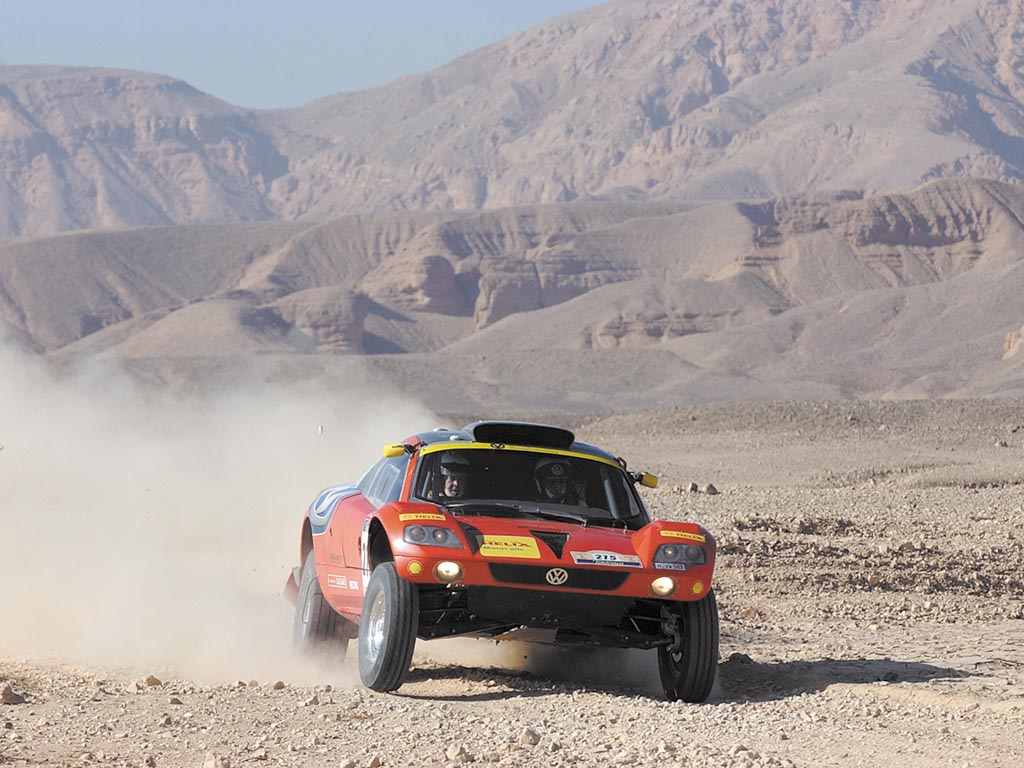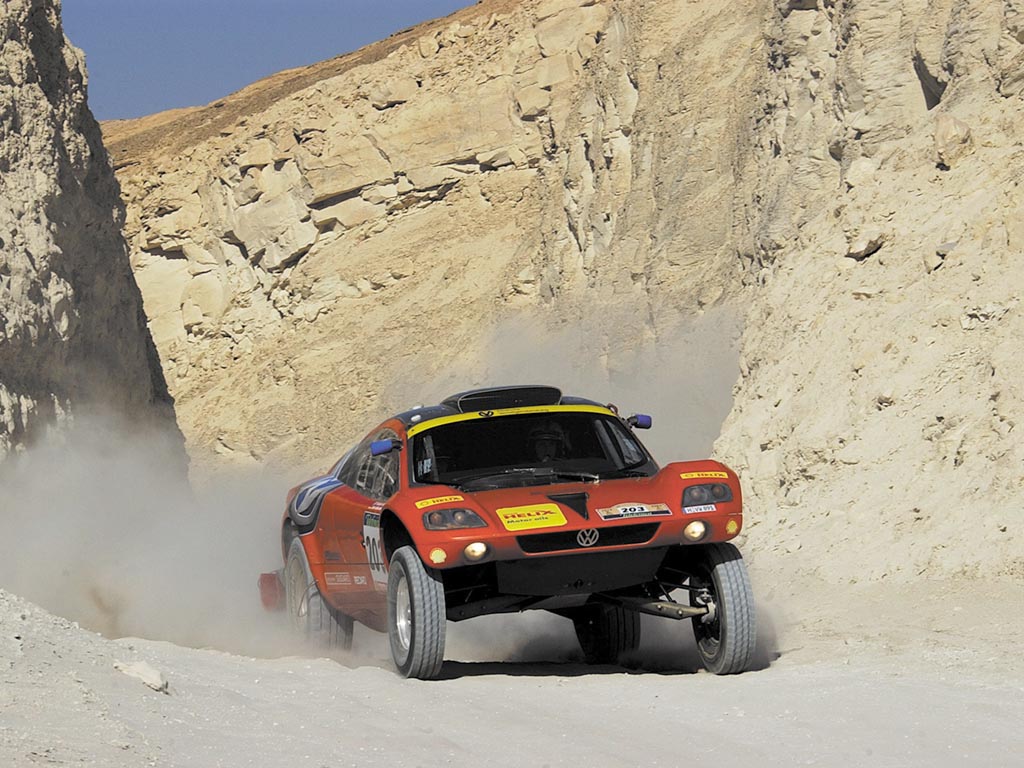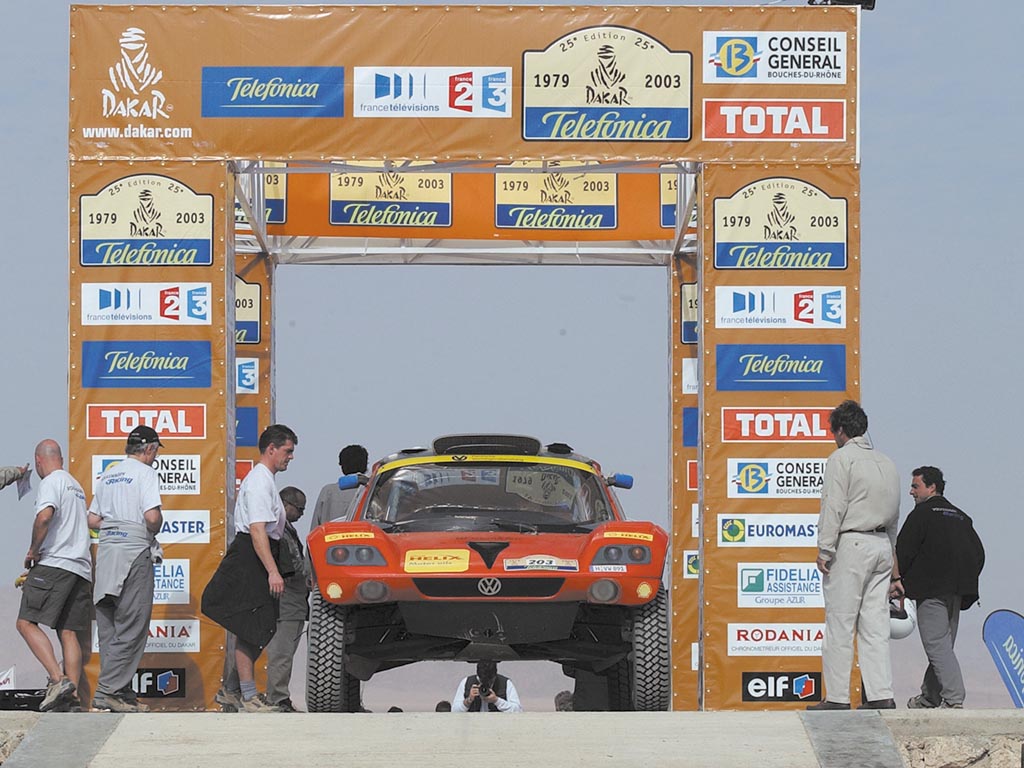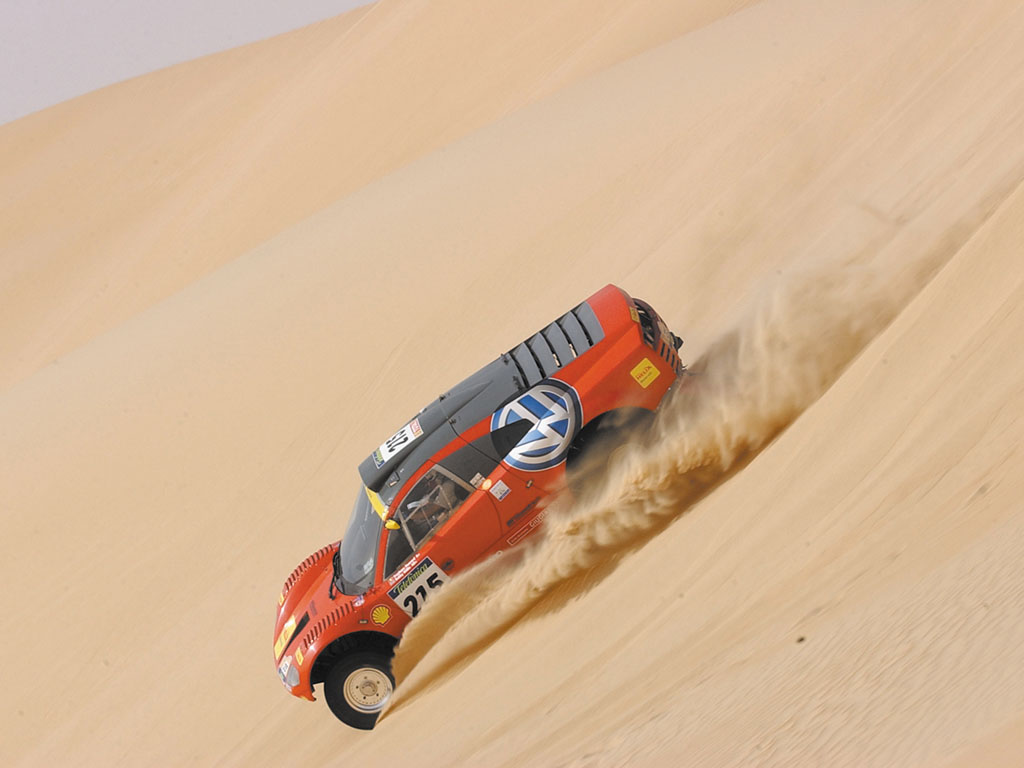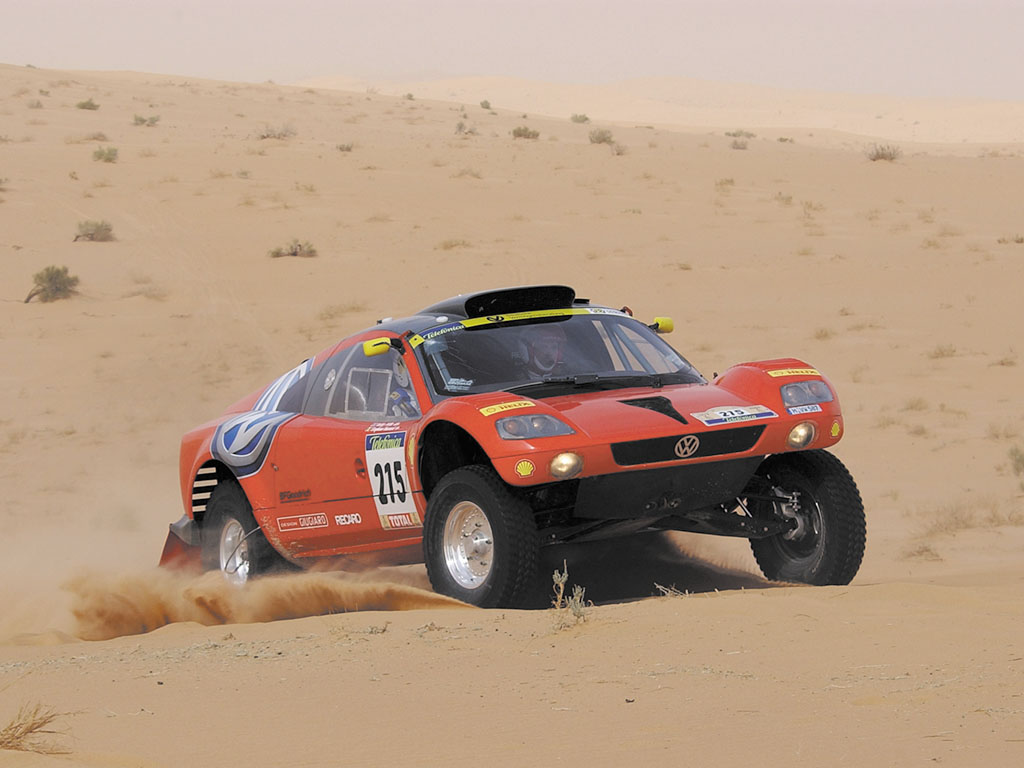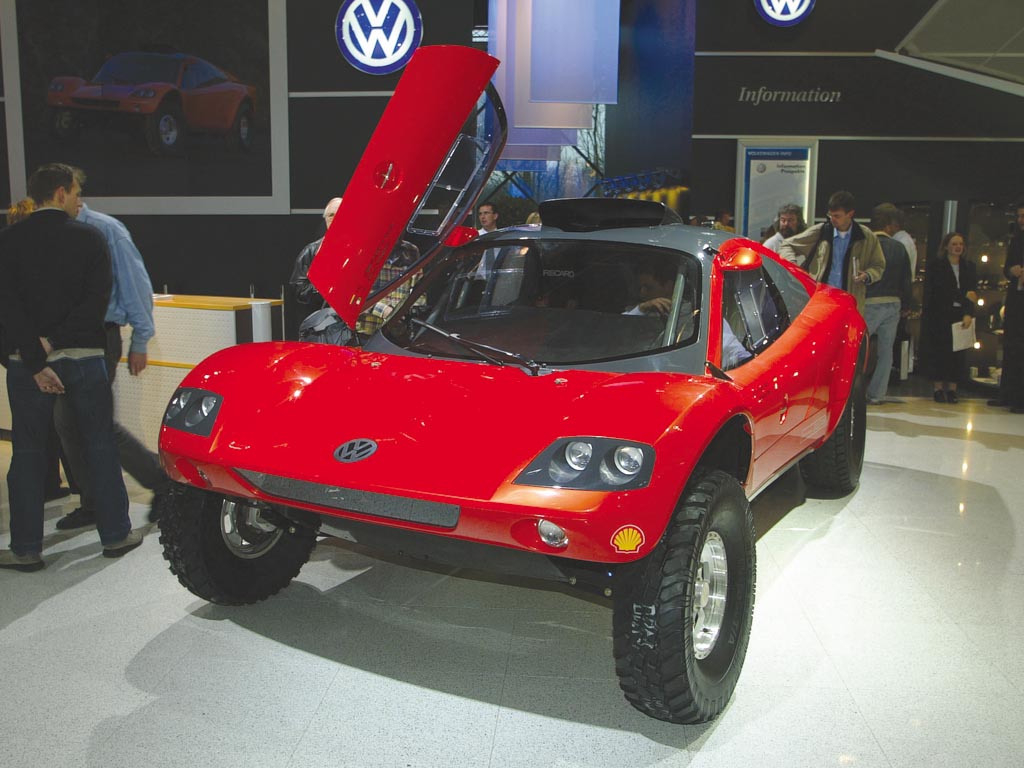2003 Volkswagen Tarek
The Volkswagen works team achieved remarkable success in the Rallye Telefanica Dakar, their debut in cross-country rallying. After 19 tough stages the very first competitive outing of the Volkswagen Tarek ended with Stephane Henrard and Bobby Willis in sixth position and eighth place for Jutta Kleinschmidt and Fabrizia Pons.
The name Tarek, the road in English, comes from the Arab language. For Volkswagen, it is more than just the name of the competition car. For its debut in modern-day cross country rallying, the company has set initial ambitions that are to be achieved with a specially designed vehicle concept.
‘The decision for a rear-wheel driven buggy is the most efficient concept that could be achieved in the short period of time between the start of our project and the Dakar rally’, says Rudolf-Helmut Strozyk, head of Volkswagen Racing. ‘A buggy is a light-weight tubular construction.
This rigid and reliable basis is an excellent testing facility for our TDI®-technology. Moreover, it is the first opportunity for the entire crew to get to know the geographical conditions in the world’s toughest cross country event.’
While the Tarek made its world debut as the actual competition car at the Essen Motor Show, November 28, the design-team of ItalDesign – Giugiaro S.p.A., based in Moncalieri near Turin, continued preparation of the other two cars. ‘The experience of our tests in Morocco fled directly into the preparation of the two further Tareks’, the head of Volkswagen Racing says. During an initial test in North-Africa in November, Jutta Kleinschmidt, Stéphane Henrard and Dieter Depping racked up some 3,000 kilometres with the buggy. In a further, shorter test in December, the team has been successfully testing the more efficient engine cooling system over some 1,500 kilometres.’
In all test sessions, the buggy, prepared to the T2 regulations set out by motorsport’s governing body, the FIA, proved to be rigid, reliable and thus competitive right away. The 1180 kg light prototype with its carbonfibre bodywork is based on a steel tubular chassis and is powered by a 160 kW (218 hp) strong 1.9 litre Volkswagen four-cylinder TDI-engine. While the spectacular bodywork and the chassis structure were only completed a few months prior to the Dakar Rally, the TDI®-powerplant in several different varieties already got its baptism of fire in motorsport. ‘The TDI®-technology has already been tested in various motorsport activities, among others during the Dakar Rally’, Rudolf-Helmut Strozyk explains.
In Detail
| engine | Water Cooled, TDI Diesel, Inline-4 |
| position | Mid Longitudinal |
| displacement | 1896 cc / 115.7 in³ |
| bore | 79.5 mm / 3.13 in |
| stroke | 95.5 mm / 3.76 in |
| power | 162.6 kw / 218 bhp @ 4250 rpm |
| specific output | 114.98 bhp per litre |
| bhp/weight | 184.75 bhp per tonne |
| torque | 390 nm / 287.6 ft lbs @ 3000 rpm |
| body / frame | Carbon Composite Body over Steel Tubular Frame |
| driven wheels | RWD |
| front tires | 235-85/16 |
| rear tires | 35×12,5×15 |
| front brakes | Solid Discs |
| f brake size | x 280 mm / x 11.0 in |
| rear brakes | Internally Vented Discs |
| r brake size | x 280 mm / x 11.0 in |
| front wheels | F 40.6 x 10.2 cm / 16 x 4.0 in |
| rear wheels | R 40.6 x 15.2 cm / 15 x 6 in |
| f suspension | Double Wishbones w/Coil Springs, |
| r suspension | Tilted Shaft w/Coil Springs, Stabilizer |
| curb weight | 1180 kg / 2601 lbs |
| wheelbase | 3060 mm / 120.5 in |
| front track | 1830 mm / 72.0 in |
| rear track | 1890 mm / 74.4 in |
| length | 4600 mm / 181.1 in |
| width | 2200 mm / 86.6 in |
| height | 1800 mm / 70.9 in |
| transmission | 5-Speed |
| gear ratios | :1 |


